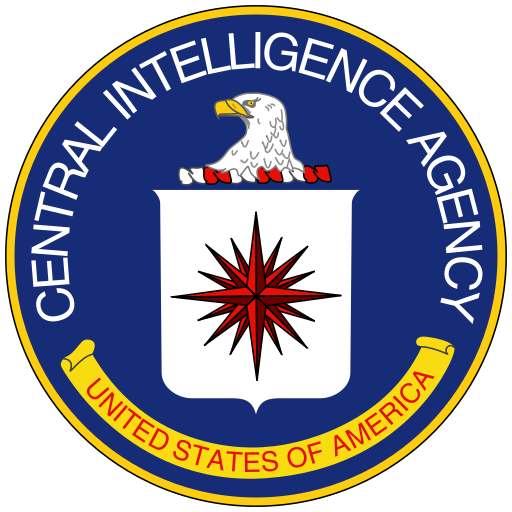The scandal resulted in the resignation of the French Defence Minister
Charles Hernu.
Greenpeace was opposed to testing and planned to lead
yachts to the atoll to protest, including an illegal incursion into
French military zones. The
Rainbow Warrior had not previously visited
New Zealand, but
David Lange's
New Zealand Labour Party
government opposed nuclear weapons development and had banned
nuclear-armed or powered ships from New Zealand ports. (As a consequence
the United States was in the process of withdrawing from its
ANZUS mutual defence treaty obligations.)
The
French government decided that in order to stop the planned protest, the Greenpeace flagship would have to be sunk.
Operation Satanique would seek to disable the
Rainbow Warrior
while it was docked, while trying to prevent any casualties. Twenty
years after the incident, a report by the then head of French
intelligence said that the attack was authorized by French President
François Mitterrand.
Agents had boarded and examined the ship while it was open to public viewing.
DGSE agent
Christine Cabon,
posing as environmentalist Frederique Bonlieu, volunteered for the
Greenpeace office in Auckland. Cabon secretly monitored communications
from the
Rainbow Warrior, collected maps, and investigated
underwater equipment, in order to provide information crucial to the
sinking. After the necessary information had been gathered, two DGSE
divers beneath the
Rainbow Warrior attached two
limpet mines
and detonated them 10 minutes apart. The first bomb went off 11:38
P.M., creating a large hole about the size of an average car. Agents
intended the first mine to cripple the ship so that everybody would be
evacuated safely off when the second mine was detonated. However, the
crew did not react to the first explosion as the agents had expected.
While the ship was initially evacuated, some of the crew returned to
the ship to investigate and film the damage. A
Portuguese-
Dutch photographer,
Fernando Pereira,
returned below decks to fetch his camera equipment. At 11:45 P.M.,
the second bomb went off. Pereira drowned in the rapid flooding that
followed, and the other ten crew members were either safely evacuated
on the order of Captain
Peter Willcox or were thrown into the water by the second explosion. The
Rainbow Warrior sank four minutes later.

Fernando Pereira
Operation
Satanique was a
public relations
disaster. France, being an ally of New Zealand, initially denied
involvement and joined in condemnation of what it termed to be a
terrorist act. The French Embassy in
Wellington denied involvement, stating that "the French Government does not deal with its opponents in such ways".
After the bombing, the
New Zealand Police started one of the country's largest police investigations. Most of the agents escaped New Zealand but two, Captain
Dominique Prieur and Commander
Alain Mafart – posing as married couple 'Sophie and Alain Turenge' and having
Swiss passports – were identified as possible suspects with the help of a
Neighborhood Watch
group, and were arrested. Both were questioned and investigated, and
their true identities were uncovered, along with the French
government's responsibility. Both agents pleaded guilty to
manslaughter and were sentenced to 10 years imprisonment on November 22, 1985.
France threatened an economic embargo of New Zealand's exports to the
European Economic Community
if the pair was not released. Such an action would have crippled the
New Zealand economy, which was dependent on agricultural exports to
Britain.
In June 1986, in a political deal with
Prime Minister of New Zealand David Lange and presided over by
United Nations Secretary-General Javier Pérez de Cuéllar, France agreed to pay NZ$13 million (
USD$6.5 million) to New Zealand and apologise, in return for which
Alain Mafart and
Dominique Prieur would be detained at the French military base on
Hao Atoll
for three years. However, the two agents had both returned to France
by May 1988, after less than two years on the atoll. Mafart returned
to Paris on December 14, 1987 for medical treatment, and was
apparently freed after treatment. He continued in the French Army and
was promoted to colonel in 1993. Prieur returned to France on May 6,
1988 because she was pregnant, her husband having been allowed to join
her on the atoll. She, too, was freed and later promoted. The removal
of the agents from Hao without subsequent return was ruled to be in
violation of the 1986 agreement.
A sixth agent,
Louis-Pierre Dillais,
commander of the operation, was never captured and never faced
charges. He acknowledged his involvement in an interview with New
Zealand State broadcaster
TVNZ in 2005.
A commission of enquiry headed by
Bernard Tricot
cleared the French government of any involvement, claiming that the
arrested agents, who had not yet pleaded guilty, had merely been spying
on Greenpeace. When
The Times and
Le Monde claimed that President Mitterrand had approved the bombing, Defence Minister
Charles Hernu resigned and the head of the DGSE, Admiral
Pierre Lacoste, was fired. Eventually,
Prime Minister Laurent Fabius
admitted the bombing had been a French plot: On 22 September 1985, he
summoned journalists to his office to read a 200 word statement in
which he said: "The truth is cruel," and acknowledged there had been a
cover-up, he went on to say that "Agents of the French secret service
sank this boat. They were acting on orders."
![]()
![]()
![]()
![]()
![]()
![]()
![]()
![]()





